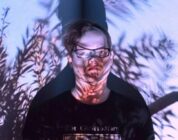LOS ANGELES — When Danny Boyle, the Oscar-winning filmmaker behind such movies as “Trainspotting” and “Slumdog Millionaire,” makes a horror film, it often has a way of landing close to home. His 2002 thriller “28 Days Later” was actually in production when the attacks of Sept. 11, 2001 occurred, and its haunting postapocalyptic imagery of empty streets and a world turned upside down made it a key movie to convey the fears of the post-9/11 era.
A new sequel, “28 Years Later” (in theaters Friday), captures the anxieties of right now in much the same way that the original spoke to its moment, evoking a contemporary sense of isolation, despair and a world long past saving. As with “28 Days Later,” the visual style of “28 Years Later” is an inseparable part of the experience, giving it a disconcerting, disorienting energy. Where the original used consumer-grade digital video cameras to innovative effect, much of “28 Years Later” was shot using iPhones.





![New Gameplay Teaser Shows off Key Mechanics for ‘Into the Dead: Our Darkest Days’ [Watch] – Bloody Disgusting](https://zombiegaming.org/wp-content/uploads/2024/03/intothedead-178x140.jpg)